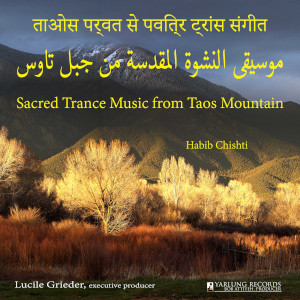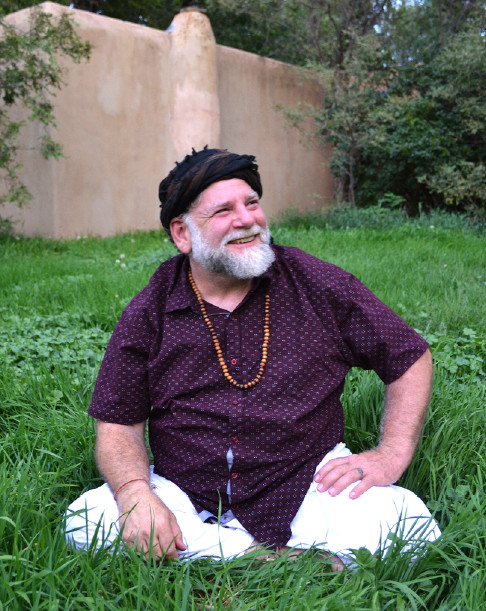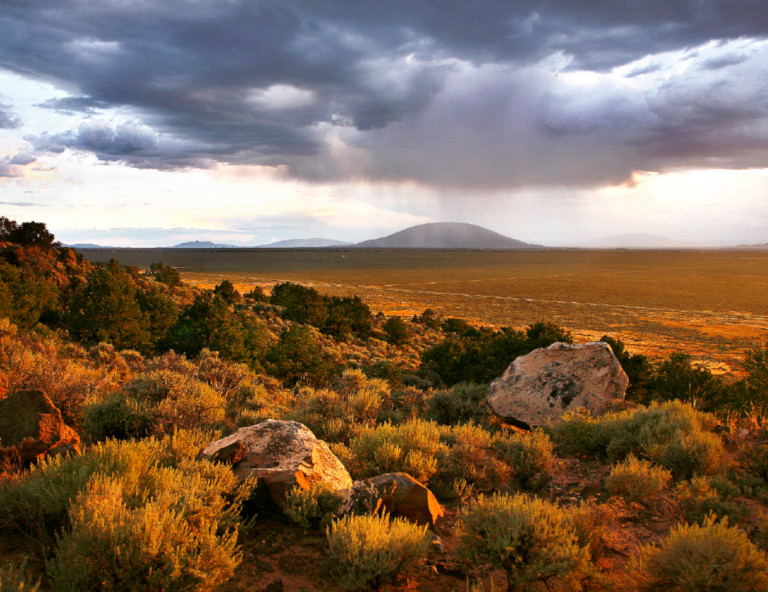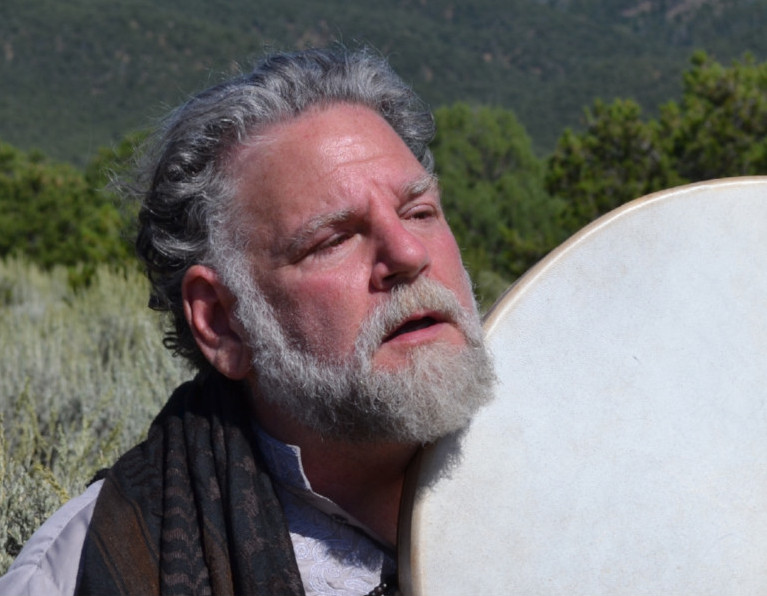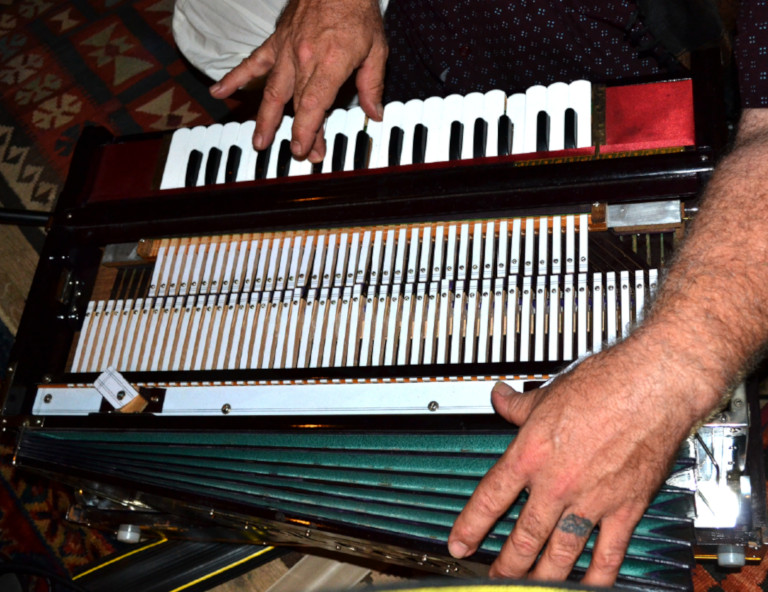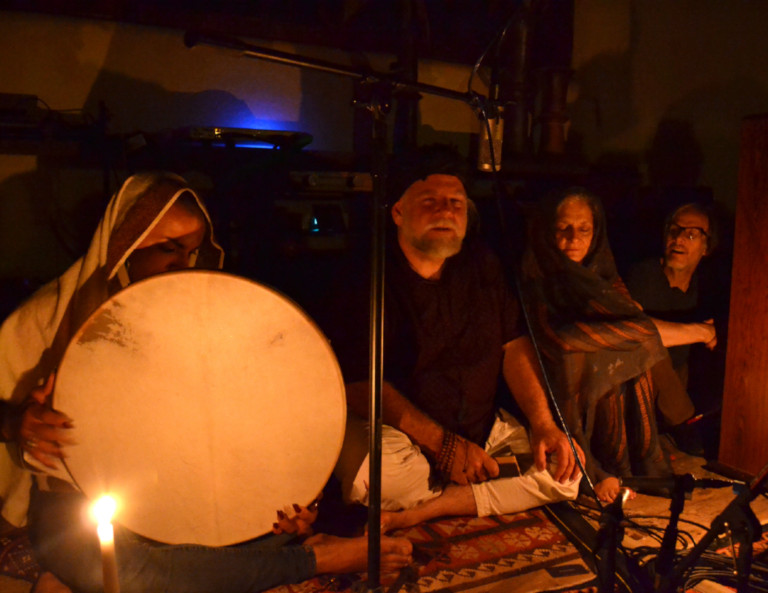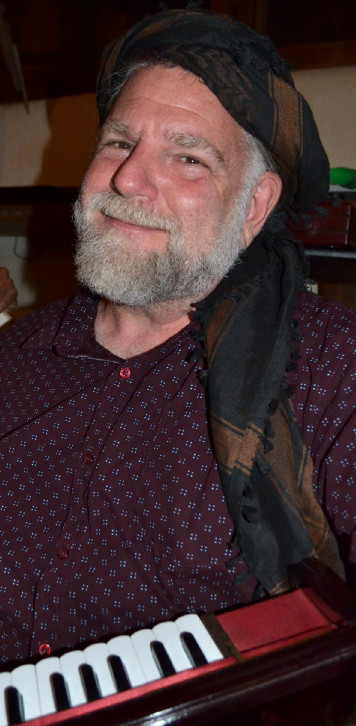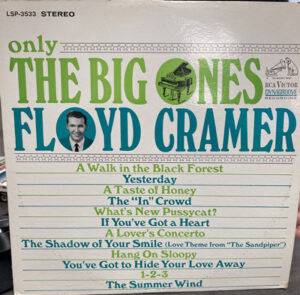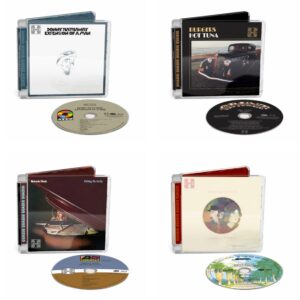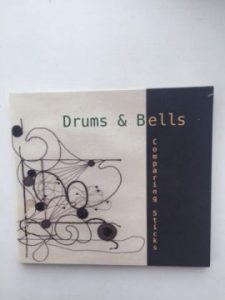Sacred Trance Music from Taos Mountain, Habib Chishti, Michael Rosell, Salman Hanuman Lee, Shawnina Good Road Woman. Yarlung Records 2020 (EP) (Pure DSD256) (HERE)
Go to your quiet place, turn out the lights, transport to the original recording session with these musicians. The sound quality is that good—immersive, translucent, and transcending. And the musical performances are that subtle, seductive, and enveloping.
Bob Atiyeh, Yarlung Records, has ever been an adventurous supporter of new, emerging artists. His recordings have long been favorites of mine. And he does not disappoint with this new release as he introduces me to a musical language with which I've not spent much time before.
I thought my first article about Yarlung Records would be a general introduction and survey highlighting several among their many outstanding releases over the years. But when I heard this recording for the first time today, it stopped me dead in my tracks and I just needed to write about it now and come back for a longer essay about Yarlung in a future article.
Sacred Trance Music from Taos Mountain invites us into the multicultural world of Habib Chishti, Sufi Master and Singer, who lives in Taos, New Mexico. Habib (birth name, Patrick Arthur Lee) was born into a Jewish and Catholic home. He lived primarily in Taos, New Mexico starting at age 13 and has absorbed the disparate multicultural lineages that make up the unique cultural community that is Taos.
Producer Lucile Grieder writes in the enclosed booklet:
"Habib has been practicing Hinduism and Sufism for over forty years, and was recognized as a Shaykh, or teacher, in the Chishti Sufi lineage. He is one of the first American Sufis to earn this teaching designation. Part of Habib’s mission as a teacher and Shaykh is identifying and sharing the core similarities between religious traditions such that people can use differing religious traditions to encourage friendships and collaboration rather than fight over details and differences…
"When one meets Habib today, one sees a huggable bear of a man sharing the infectious twinkle in his eye. He looks like a wandering ascetic on a Himalayan path, yet well fed. His all-encompassing affection for humanity and the world helps one appreciate Habib’s multiple religious backgrounds."
"Taos, New Mexico evokes magic, mystery, art, multiculturalism and majesty. Home to the Tiwa speaking Red Willow people of Taos Pueblo for more than a thousand years, home to Spanish settlers from 1600 and 'Anglos' (which means everyone not Native American or Spanish) since shortly after the treaty of Guadalupe Hidalgo in 1848, Taos offers not only breathtaking scenery, refreshing air and light and the magnificent smells of adobe earth, pinion and sagebrush, but also the social problems and triumphant collaborations that come from three distinct cultures living together in what is still in many ways the Wild West."
Grieder continues, "At present, Habib is in the middle of two-year pilgrimage, studying the teachings, history, culture and music of venerated Sufi teachers and saints in India, Pakistan and other parts of the world. Habib is studying and absorbing more of this rich tradition to incorporate into his own spiritual, musical and practice. He looks forward to sharing these traditions and the experience of universal unity they inspire more fully with the world in coming years. Here he is, a traveler and seeker of truth, no matter whether he is a Jewish, Catholic, Hindu, Agnostic, Shaman, Muslim Shaykh with abundant love and generosity to share with others in an inclusive embrace."
This is music, and a tradition, that is new for me. So, I was gratified to find Bob Atiyeh's extensive booklet attached as I worked to understand more about the tradition from which this music comes. Bob writes, in part and highly condensed,
"By 500 BC, Buddhism and Jainism were emerging forces in the religious and psychological landscape of the Indian subcontinent and beyond.
"With these advents came a new concept. The Buddhists called it the nature of 'dependent arising.' Because of the interdependence of all things and all actions, individual motivation and action had profound effects on the present and the future and that these happenings had effects for good or ill that ricocheted around the cosmos like the ripples in a pond when one disturbs the surface of the water by casting in a stone. Individual responsibility, to oneself and to the rest of the universe became critically important. In this Axial Age, this new focus on internal reality instead of external actuality blurred the boundaries of birth and death such that this 'dependent arising' transcended individual lifetimes.
"…The Axial age encouraged people to absorb the wisdom of wandering ascetics to enable a direct intellectual and emotional connection to the divine, combining subtle intuition and understanding within a traditional religious framework…
"The Sufi path flowered beginning in the 12th Century AD…Essentially, Sufism is a practice and perspective that heightens direct worshipful experience and enjoyment of the divine. God in Sufism has no gender. Habib’s description of Sufi worship as in the dhikrs chanted on this album, can be likened to spending the night making love with God...
"A dhikr (which literally means "to remember") is a meditational chant, sung or recited individually or in a group, made sacred by its text, which is the repetition of the name or attributes of God. This chant heightens communion with divine love. One can chant the dhikr using prayer beads to chart the repetitions, or a leader can assume the role of principal singer and guide for fellow congregants from just a few to hundreds of people chanting and dancing in communal worship."
This DSD256 EP to which I'm listening contains two tracks. Track one includes two cycles of the Hanuman Chalisa, a Hindu hymn to the monkey-god Hanuman. Track two includes two cycles of a Sufi dhikr, or meditative chant, designed to engender a mystical union with God. In these two tracks, one experiences an aspect of the multicultural embrace that infuses Habib's life.
Habib's harmonium, heard in track 1, "Two Hanuman Chalisas"
Recording session in Taos.
The marvelous treat with this DSD256 EP are 28 minutes of superbly recorded music in pure DSD with no PCM processing. The clarity, resolution, and purity of the sound are stunning. It simply doesn't get better than this for a sound-quality-worshipping audiophile who values minimalist miking that captures the session simply and without post production edits and futzing. When coupled with music performance quality of this standard, the listening just cannot be bettered.
Highly recommended. My only wish is that Bob would release all of the recording session in DSD256 for us and not just these two tracks. Hint, hint…
Artists' images by MikeDesign and New Mexican landscape photos by Geraint Smith Photography, courtesy of Bob Atiyeh, Yarlung Records




